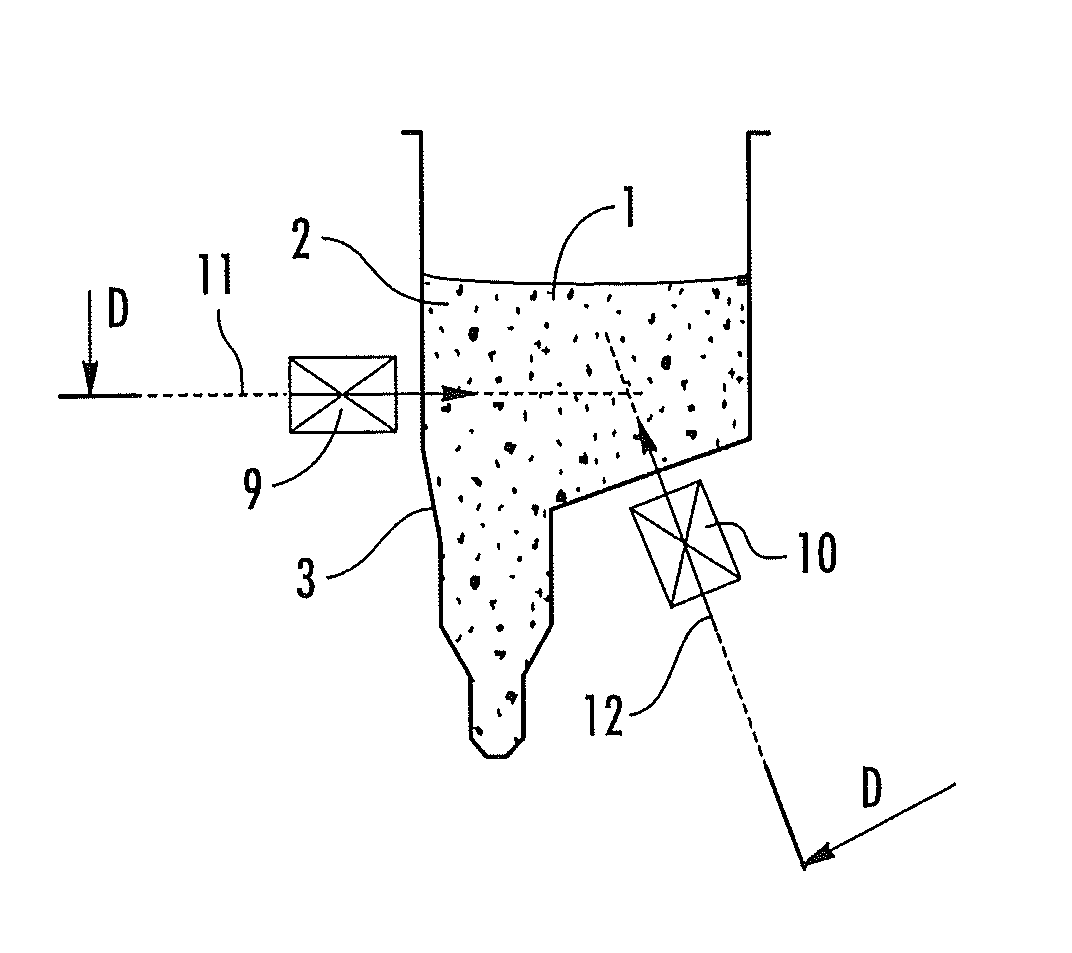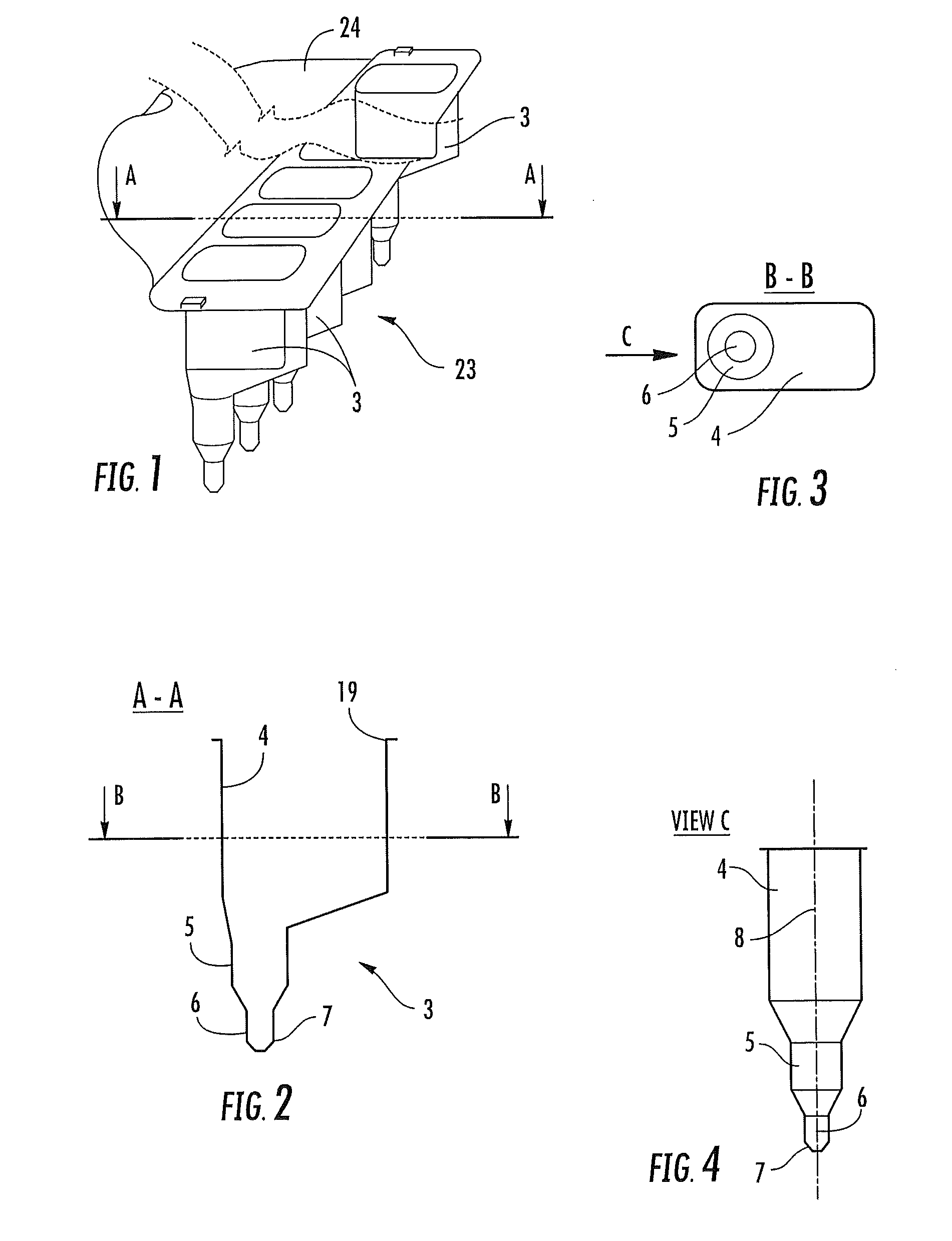Devices for separating, mixing and concentrating magnetic particles with a fluid
- Summary
- Abstract
- Description
- Claims
- Application Information
AI Technical Summary
Benefits of technology
Problems solved by technology
Method used
Image
Examples
— example 1
2—EXAMPLE 1
Concentration of Ribosomal RNA from Plasma Samples
2.1—Materials and Methods
[0164]Target RNA is extracted from Escherichia coli cells using the Qiagen RNA / DNA maxi kit (article code 14162, Qiagen, Hilden, Germany). For each sample, 2 micrograms (μg) are used as input.
[0165]Sample is constituted by normal EDTA / citrate plasma samples from a pool of 100 individual blood donations.
[0166]The RNA quantification is performed using a luminescent marker for RNA (Sybr Green-II, supplied by Molecular Probes: article S-7564) in combination with a luminescent-reader for microtiter plates (“Victor2”, supplier Wallac Oy, Turku, Finland: 1-420-multilabel counter).
[0167]Purity of the output buffer is determined from the relative value for the spectral absorption at 260 nm and 280 nm (A260 / A280) using an UV spectrophotometer (supplier Unicam, Cambridge, Great Britain: Unicam UV-I).
[0168]A set of twenty-four plasma samples is prepared as follows:[0169]With each sample, ...
— example 2
3—EXAMPLE 2
Concentration of Plasmid DNA from Plasma Samples
3.1—Materials and Methods
[0181]Target is a plasmid DNA, pBR322 (article N3033L, New England Biolabs Inc., Beverly, Mass.), linearized by BamHl (article ElOlOWH, Amersham Bioscience Corp, NY, USA). Six μg of DNA is used as input per sample
[0182]The sample is constituted by 0.1 ml normal EDTA / citrate plasma from blood donations
[0183]Twenty-four samples are processed simultaneously, using the same procedure as with example 1. The individual plasma samples are added to the reaction vessels. Next, 2 ml of NucliSens lysis buffer are added. Subsequently, the plasmid DNA is spiked to the sample and 1 mg of magnetic particles is added to the mixture.
3.3—Extraction Method
[0184]The collection step, washing steps and elution step of the extraction procedure are identical to example 1.
3.4—Result
[0185]After completing the procedure, the amount of extracted DNA is determined from the optical density of the output buff...
— example 3
4—EXAMPLE 3
Recovery of Viral RNA from Sputum Samples
4.1—Materials and Methods
[0189]In this experiment, the recovery of HIV RNA that is spiked to nine sputum samples is determined using the NucliSens EasyQ HIV-I assay version 1.1 (article 285029, bioMerieux B.V., Boxtel, The Netherlands).
[0190]The RNA is HIV RNA obtained from a cultured HIV-I type B virus stock (HXB2) that is lysed using the NucliSens lysis buffer and calibrated against the WHO International HIV-I RNA standard.
[0191]The sputum samples were obtained from the University Hospital of Antwerpen (Belgium).
[0192]With each sputum sample a volume of 1 ml is mixed with 0.5 ml of protease solution (100 mg / ml) and incubated on a plate shaker for 20 minutes at room temperature to obtain a liquefied sample.
[0193]The target HIV RNA is spiked to a tube containing 2 ml of NucliSens lysis buffer, using 30.000 copies input for each sample. Together with the HIV RNA, a calibrator RNA that is part of the EasyQ kit i...
PUM
| Property | Measurement | Unit |
|---|---|---|
| Angle | aaaaa | aaaaa |
| Angle | aaaaa | aaaaa |
| Angle | aaaaa | aaaaa |
Abstract
Description
Claims
Application Information
 Login to View More
Login to View More - R&D
- Intellectual Property
- Life Sciences
- Materials
- Tech Scout
- Unparalleled Data Quality
- Higher Quality Content
- 60% Fewer Hallucinations
Browse by: Latest US Patents, China's latest patents, Technical Efficacy Thesaurus, Application Domain, Technology Topic, Popular Technical Reports.
© 2025 PatSnap. All rights reserved.Legal|Privacy policy|Modern Slavery Act Transparency Statement|Sitemap|About US| Contact US: help@patsnap.com



